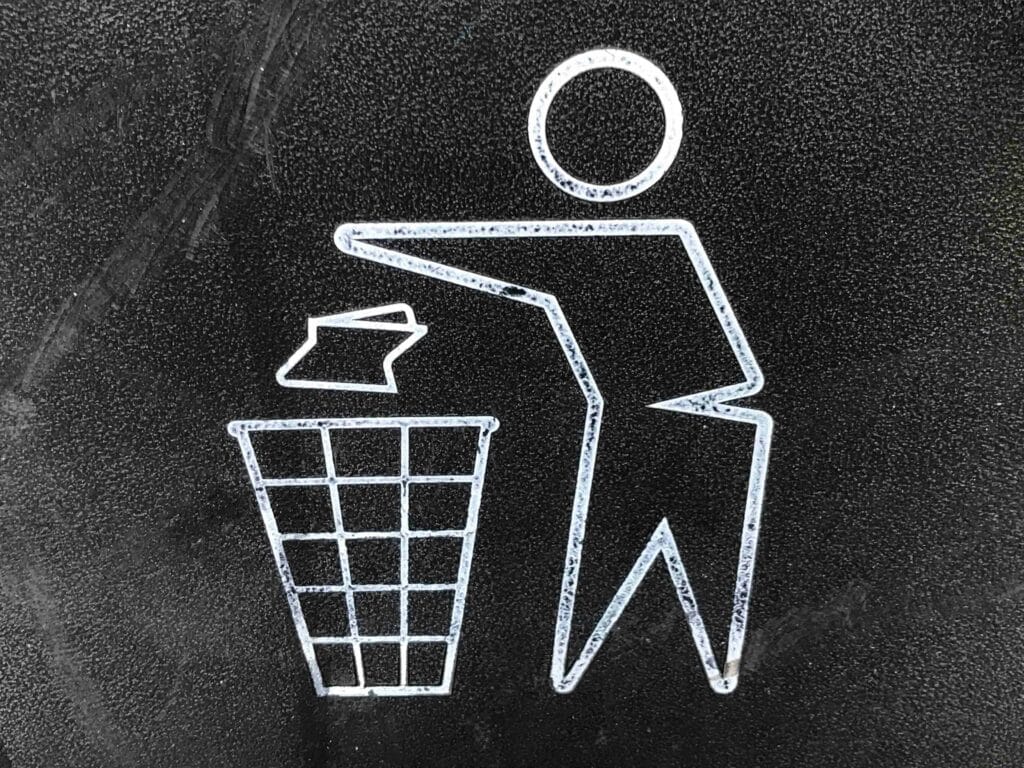Renovating a home is satisfying. The cleanup afterward rarely is. Renovation debris removal covers everything from drywall and flooring scraps to metal, old fixtures, and problem materials that need special handling. This guide walks Winnipeg homeowners through realistic steps: how to sort and divert material, which items need specialist disposal, local depot options, safety and permit basics, and when to call renovation debris removal experts like Mr. Garbage. Read this before you start hauling; it will save time, headaches, and a trip back to the depot.
Why renovation debris removal matters (and the scale of the problem)
Construction, renovation, and demolition (CRD) waste is one of the largest single waste streams in Canada. It includes wood, metal, drywall, concrete, and other building materials that are often recoverable if handled correctly. National reporting highlights that Canada produces millions of tonnes of solid waste annually and that non-residential sources, including construction-related activity, are a major driver of disposal tonnage. Efficient renovation debris removal reduces landfill burden, supports local recycling markets, and lowers risk for homeowners and contractors. Canada
A practical takeaway: plan for separation on-site from day one. Sorting slightly at source wood, metal, drywall, recyclables, and hazardous items makes later processing far simpler and more likely to be accepted by local depots and processors.
What renovation debris removal includes
Renovation debris removal ranges in scale and scope. Typical tasks include:
- Site sorting and staging of materials (keep like with like).
- Removal of large items (cabinets, bathtubs, fixtures).
- Collection and routing of metals, clean wood, and drywall to recyclers.
- Identification and safe handling of hazardous or regulated materials (paints, solvents, refrigerant appliances, asbestos suspects).
- Final haul-away and lawful disposal or recycling at approved facilities.
If you prefer not to manage trucks and depot visits, hiring renovation debris removal experts removes the logistics and ensures materials are routed correctly.
Where to take renovation debris in Winnipeg
Winnipeg offers a mix of municipal depot services and private processors for renovation debris. The City’s 4R Winnipeg depots accept many household recycling and reusable materials, while the Brady 4R Depot handles a broader range of items and hazardous materials. For mixed construction loads, private processors and transfer stations are the usual destination. Mr. Garbage coordinates routing to the right local facilities so your renovation debris ends up where it should. City of Winnipeg
Before you drive anywhere, check what each facility accepts. For example, appliances with refrigerant usually need certified refrigerant recovery before drop-off; sharps, certain chemicals, and asbestos-suspect materials are not accepted at standard depots and require specialist handling.
How to sort renovation debris
Sorting helps both cost and diversion. Use these practical categories at the worksite:
Recyclables and reusable materials
- Clean metal, copper piping, and fixtures.
- Unpainted, untreated, clean wood and pallets.
- Cardboard and packaging from deliveries.
- These materials have steady local markets and are easiest to recycle when kept clean and separated.
Gypsum and drywall
Drywall is common in renovations. Clean gypsum is often recyclable where processors accept it; contaminated or painted drywall may be routed differently. Bag small offcuts to keep them compact and dry.
Mixed demolition and general waste
Mixed loads from demolition often include a combination of materials. Decide early whether you’ll separate on-site or send mixed loads to a processor that can sort. Mr. Garbage offers staged pickups if you prefer to separate over time.
Hazardous and regulated items
- Paints, solvents, adhesives, and pesticides need hazardous-waste handling.
- Batteries and electronics must go to stewardship programs.
- Refrigerant appliances need certified recovery before disposal.
- Asbestos-suspect materials require licensed abatement; do not handle them yourself.
Stopping at the depot without checking acceptance rules can lead to rejected loads. When in doubt, ask your hauler or the depot.
On-site rules for renovation debris removal
Safety is non-negotiable when handling renovation debris. Follow these basic rules:
- Wear PPE: gloves, eye protection, dust masks, or respirators as needed.
- Keep a clear path for removal and vehicle access.
- Store sharp objects in rigid containers labelled “sharps/metal.”
- Don’t allow unsecured loads to travel on public roads; tarp and secure as required.
- If mould, asbestos, or hazardous chemical residues are present, call licensed professionals rather than handling them yourself.
A tidy, staged worksite reduces injury risk and speeds cleanup.
Permits, bylaws, and driveway placement: What Winnipeg homeowners should know
If you place a roll-off or bin in a boulevard, sidewalk, or street, the City of Winnipeg usually requires a permit. Keeping containers fully on private property (driveway or garage apron) often avoids permits, but check property, condo, or neighbourhood rules. Large or visible dumpsters sometimes trigger notices from property managers or city officials to plan placement and communicate with neighbours if needed. Mr. Garbage advises on typical permit triggers and helps place bins to minimise disruption. City of Winnipeg
Why hire renovation debris removal experts (and when to DIY)
You can manage small-volume waste yourself; a few depot trips and careful sorting will do. But call experts when:
- The project produces large volumes that you can’t safely move.
- You encounter hazardous or regulated items (paint, asbestos suspects, refrigerant appliances).
- You want documented disposal for permits or resale paperwork.
- You prefer a single point of contact to manage staging, pickups, and routing.
Renovation debris removal experts streamline the process: one call, staged pickups, and proof that material was taken to approved processors.
Real Winnipeg example: A kitchen renovation that stayed tidy
A Winnipeg homeowner replaced their kitchen cabinets and counters. They kept salvageable hardware and fixtures for donation, separated clean wood and metal, and bagged drywall scraps. Mr. Garbage delivered a small yard bin, staged pickups around key demo days, and routed metals to a local recycler and the rest to an approved processor. The homeowner avoided multiple depot trips and had documentation for the renovation record. Small separation steps at the source made the whole job smoother.
Special handling: Appliances, paint, and asbestos-suspect materials
Some items require extra steps:
Appliances with refrigerant
Fridges and A/C units contain refrigerant. Certified technicians must reclaim refrigerant before appliances are recycled or disposed of. Never puncture or crush these units without recovery.
Household hazardous waste
Leftover paint, solvents, and pesticides should go to hazardous-waste programs or the Brady depot, where they are accepted. Many community events also offer hazardous-waste drop-off.
Asbestos risk
If your home was built in an era when asbestos was commonly used, suspect materials (vinyl tiles, older insulation, some siding) should be tested. If positive, licensed abatement is required. DIY removal risks serious health consequences.
For all of these, renovation debris removal experts either manage the specialist routing or coordinate with certified contractors.
How processors and recycling partners handle renovation debris
Processors sort mixed loads and recover metals, concrete, clean wood, and other materials. Some local processors accept mixed C&D (construction and demolition) loads and separate materials at scale. Others specialize in drywall recycling, metal recovery, and concrete crushing. Discuss routing with your hauler so materials go to the right place and you get proper disposal records when needed. Mr. Garbage maintains relationships with local processors and the City’s 4R depots to route material responsibly. Mr. Garbage
Environmental context — Canada and C&D waste
In Canada, C&D waste represents a significant portion of the national waste stream. National indicators show rising totals of waste disposed of overall, while diversion rates have improved in recent years. Reducing the amount of renovation debris sent to landfill depends on better on-site sorting, reuse, and routing to specialized processors — actions that make a measurable difference when adopted widely. Canada
Expert note: “A little separation on-site unlocks a lot of recycling downstream,” says a local waste consultant. “Contractors who set aside clean wood and metal see far less landfill and far more reuse.” — regional waste consultant.
Practical checklist for preparing for renovation debris removal
Use this homeowner-friendly checklist before demo day:
- Audit expected debris types (wood, drywall, fixtures, appliances).
- Reserve the right bin size and schedule staging/pickups with your hauler.
- Set aside hazardous and refrigerant-containing items for specialist handling.
- Communicate bin placement with neighbours and check permit needs.
- Bag small debris and secure sharp objects.
- Photograph and document salvageable items for donation or reuse.
This checklist reduces surprises and keeps your project on schedule.
How Mr. Garbage helps with renovation debris removal in Winnipeg
Mr. Garbage offers end-to-end support for homeowners:
- Delivery and staged pickups to match demo timelines.
- Guidance on sorting and what goes where.
- Routing to 4R depots and certified processors for regulated streams.
- Documentation of disposal and recycling for permit or resale purposes.
- Coordination with licensed abatement or hazardous-waste handlers when required.
If you’d rather not manage multiple trips to depots, Mr. Garbage becomes the single partner who keeps the project moving and compliant.
Conclusion
Renovation debris removal is a practical, manageable part of any home project when you plan it. Separate clean wood, metal, and drywall; set aside hazardous items for specialist handling; use local depots and certified processors; and consider renovation debris removal experts when volumes, hazards, or paperwork make DIY impractical. Winnipeg’s 4R depots and private processors can recycle a surprising amount, but only if the material is sorted and routed correctly.
If you’re planning a renovation and want the cleanup handled professionally, Mr. Garbage will stage pickups, route materials responsibly, and provide the documentation you need. One call, fewer headaches, and a cleaner, safer site.
Ready to plan your renovation debris removal in Winnipeg? Contact Mr. Garbage for a site assessment, staged pickup plan, and responsible routing to local processors and 4R depots.
Frequently Asked Questions (FAQs)
Q1: What counts as renovation debris removal?
A1: Renovation debris removal covers the collection, staging, and lawful disposal or recycling of materials produced during a home renovation — drywall, wood, metal, fixtures, appliances, and properly handled hazardous items. It includes sorting, staged pickups, and routing materials to appropriate depots or processors.
Q2: Can I put old paint or solvents in a renovation debris bin?
A2: No. Leftover paint, solvents, and similar hazardous household chemicals should go to hazardous-waste drop-off locations or stewardship programs. They are not accepted in standard renovation debris bins and require specialist handling.
Q3: Do I need a permit for a roll-off bin on my street in Winnipeg?
A3: If any part of the bin sits on the public boulevard, sidewalk, or street, you will typically need a City of Winnipeg right-of-way or street-use permit. If the bin fits fully on private property, a permit is often not required, but always confirm before delivery.
Q4: What should I do with appliances that contain refrigerant?
A4: Appliances that contain refrigerant (fridges, freezers, air conditioners) must have refrigerant professionally recovered by a certified technician before recycling or disposal. Do not puncture or crush these units yourself.
Q5: How can Mr. Garbage help with renovation debris removal?
A5: Mr. Garbage delivers bins, stages pickups to match your renovation schedule, routes materials to 4R depots and certified processors, coordinates specialist handling for hazardous items, and provides disposal documentation when needed.

